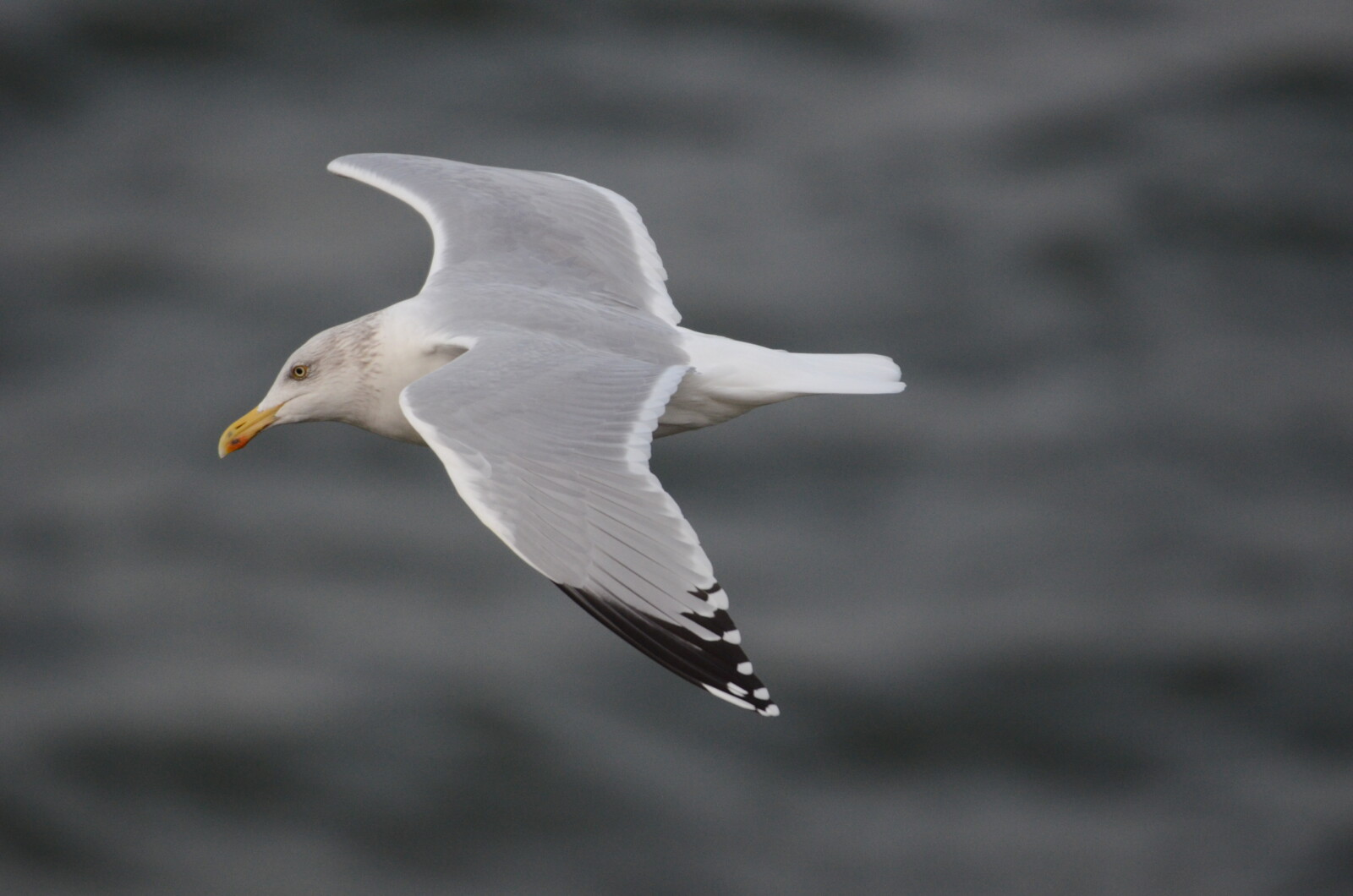European herring gull
- European herring gull, Matsalu, Hanemaa
- https://linnuriik.ee/wp-content/uploads/2021/09/Hobekajakas_Sander-Sirelbu-1024x678.jpg
- Keemu linnud
- https://linnuriik.ee/wp-content/uploads/2021/09/22_Hobekajakas_080613aa105100_Matsalu_Hanemaa.mp3
European herring gull. Photo: Sander Sirelbu
Introduction
Latin Larus argentatus Pont.
Estonian Hõbekajakas
Also known as: herring gull.
Status in Estonia
Breeding, migratory and wintering bird.
Description
Its size and light grey plumage distinguish it from other gull species (the common gull is smaller). It is very similar to the Caspian gull, although its wings are not as long and pointed. The light grey top part comes during the second winter; prior to this, young birds covered with brown specks are difficult to identify from lesser black-backed gulls and great black-backed gulls. The head of an adult bird is white in the summer and greyish-brown striped in the autumn and winter. As it grows older, the colour of the beak progressively changes from black to yellow, with an orange-red patch, and the eye changes from dark brown to pale yellow. Legs are pink across all age groups.
Size
Body length 54–60 cm, wingspan 123–148 cm, body mass 640–1700 g.
Similar species
Common gull, lesser black-backed gull, great black-backed gull, Caspian gull.
Distribution
It is a globally widespread species that lives along the shores of the North Atlantic and Baltic Sea, with distinct subspecies in Northern Siberia and North America. Great Britain, Sweden, Norway, Denmark, the Netherlands, Germany and France make up the majority of the species’ distribution in Europe. It is a common breeding bird in Estonia.
Population
Estonia has 10,000–15,000 breeding pairs.
Occurrence in Estonia
About 30,000–50,000 European herring gulls winter in Estonia, primarily in coastal cities but also along the ice-free coast. As a result, predicting when European herring gulls arrive is extremely difficult. They most likely arrive from March to the end of November or early December.
Diet
Its diet consists of fish, various tiny animals and sometimes berries. During the breeding season, it mostly consumes the eggs and chicks of other birds, particularly smaller seagull species, as well as the chicks of nesting neighbours.
Habitat
Most European herring gulls live on small islands. Birds living around the seaside frequently choose a huge rock near the beach to nest. European herring gulls are also frequently seen on lake islands and raised bog ponds and have recently become more common on the roofs of city buildings.
Nesting
It typically nests in colonies; however, the space between nests in the colony is at least 5–6 metres. The nest site is usually on the island’s higher middle area, which is covered with grass. On islands with high sand or shingle banks, nests are often made on bare ground. Various straws and bladder wrack found on the shore are utilised as building materials. Laying begins early; normally, the first eggs are laid in mid-April. The nest contains 1–4 eggs and incubation lasts 26–29 days, starting when the first egg is laid. The nest is never left alone and the parents frequently switch with each other. Hatched European herring gull chicks lie hopelessly in their nest for a day without nourishment before hiding in the tall grass, where their parents bring regurgitated food to eat. If chicks are in danger, they can flee into the water after the tenth day since their plumage and swimming abilities have developed enough. Chicks are capable of flight at 35–40 days of age and will soon begin flocking. By mid-July, the colonies are empty.
Conservation status and protection
Not under protection. The breeding success of European herring gulls is hampered by a variety of predators, particularly crows, common ravens, sea gulls and other European herring gull. The foxes that inhabit the islands have also made their numbers decline. A decrease in the food supply may also have an impact if waste management is improved.
Distribution and population in Lääne County
The European herring gull is a common breeding and migratory bird in Lääne County. Wintering birds flock largely around ports, particularly in Port Dirhami.
European herring gulls are more common in Matsalu, particularly around small sea islands where they can breed. Therefore, they are most visible in Cape Puise and Port Keemu. However, these birds don’t go unnoticed at other coastal observation locations in the county.
